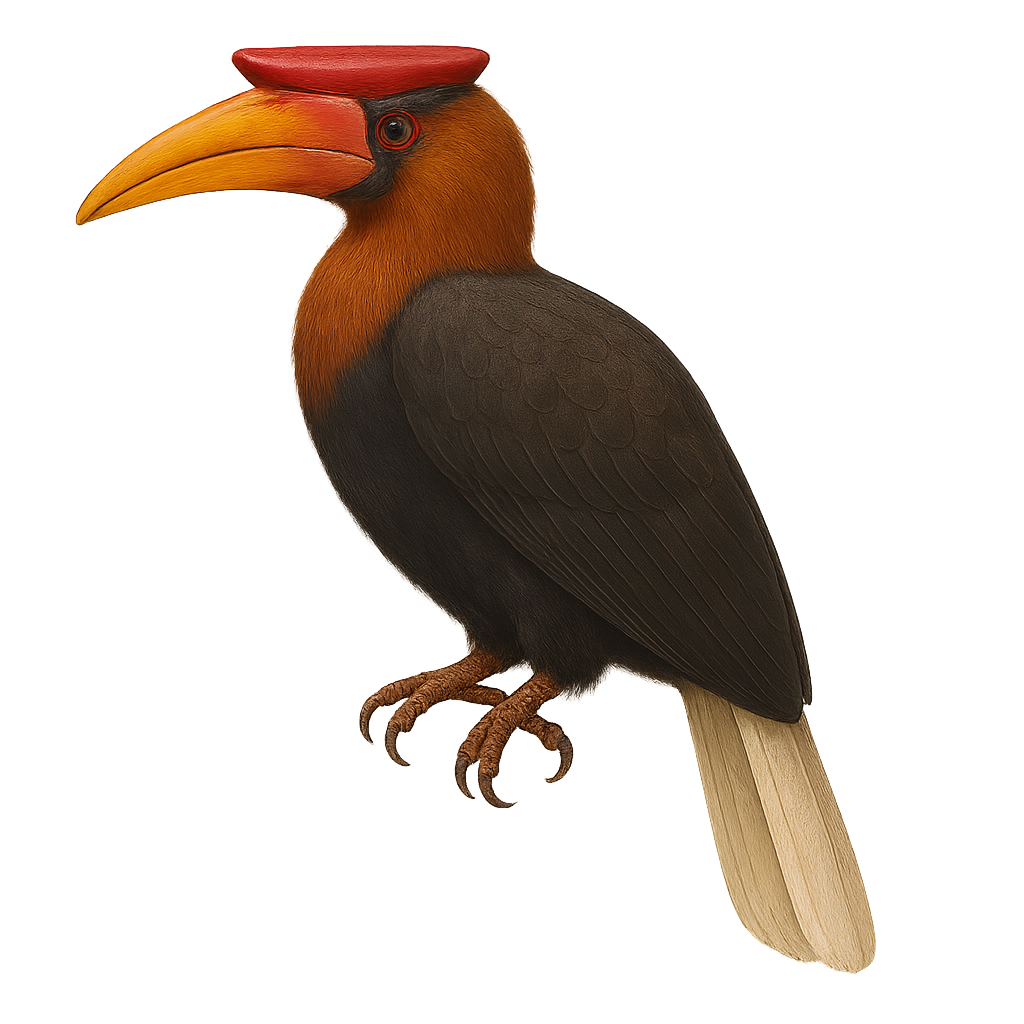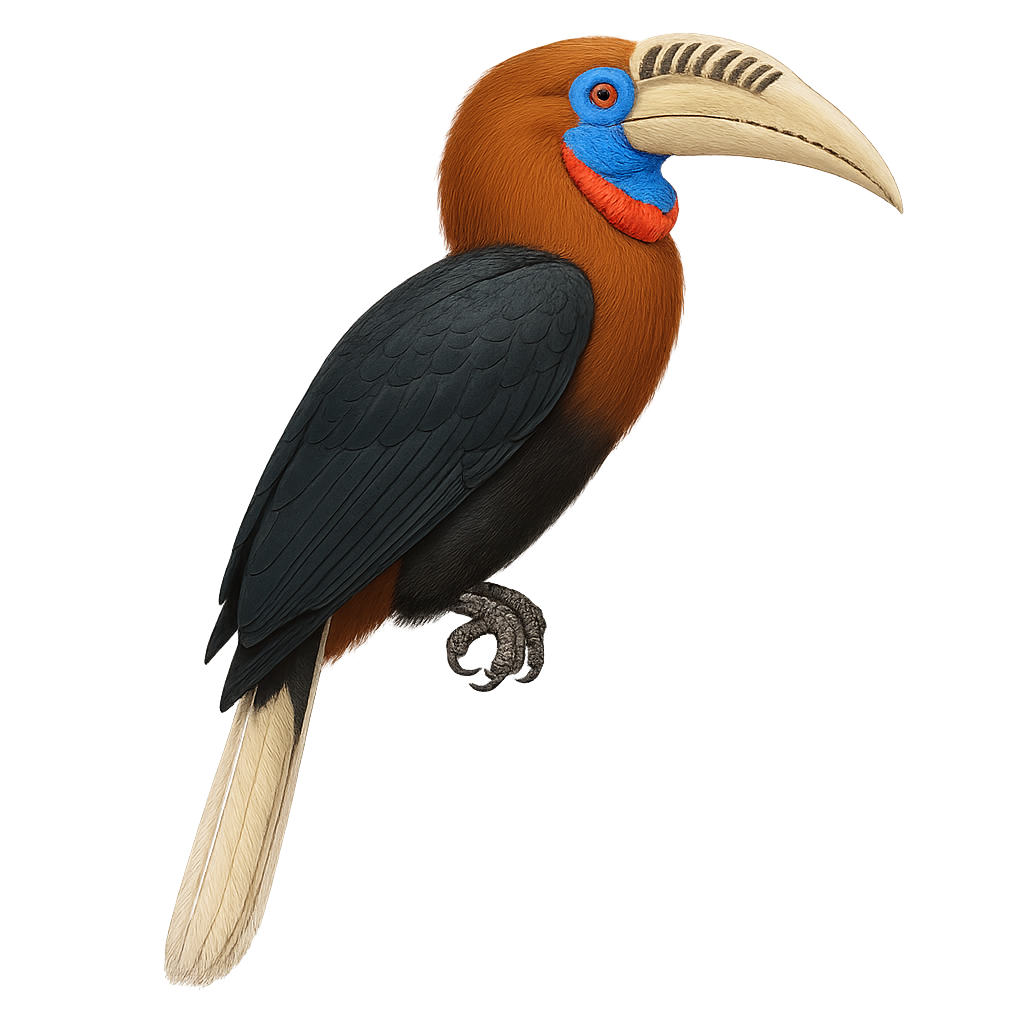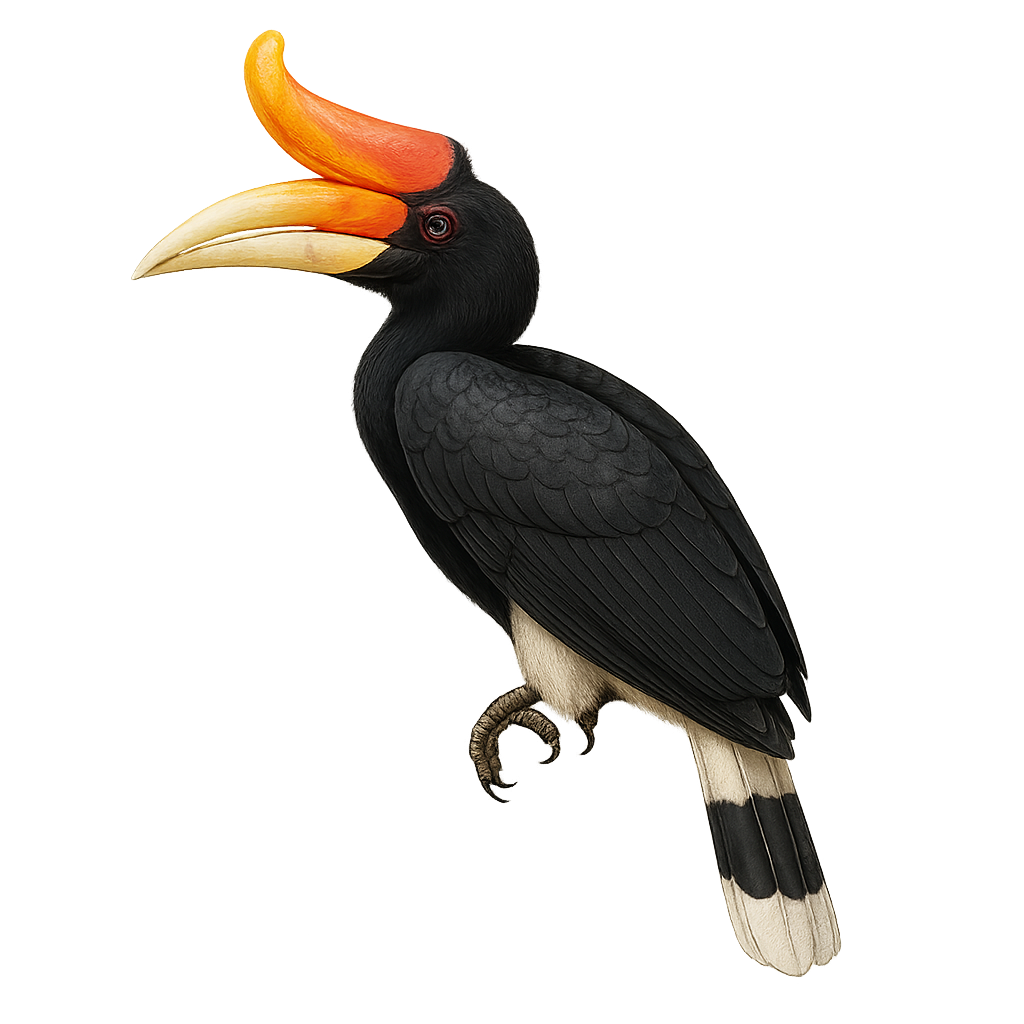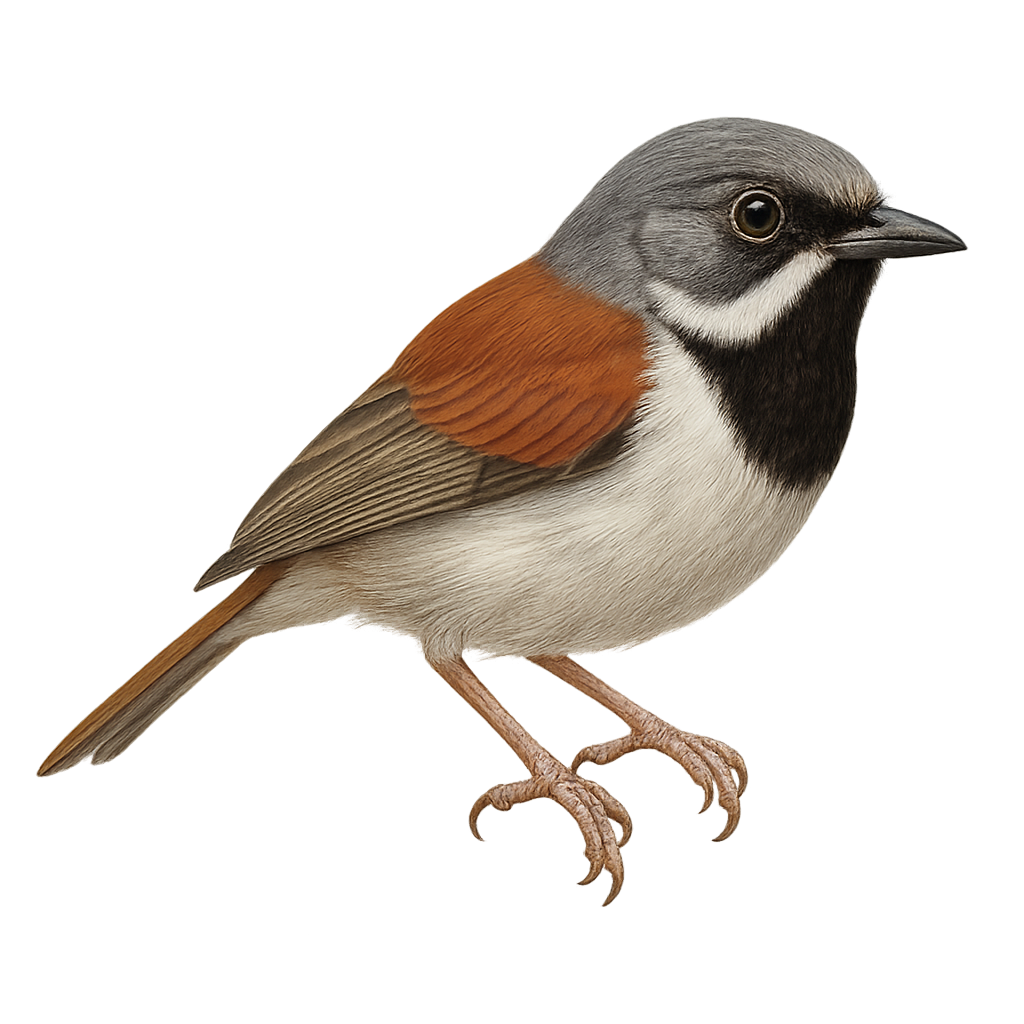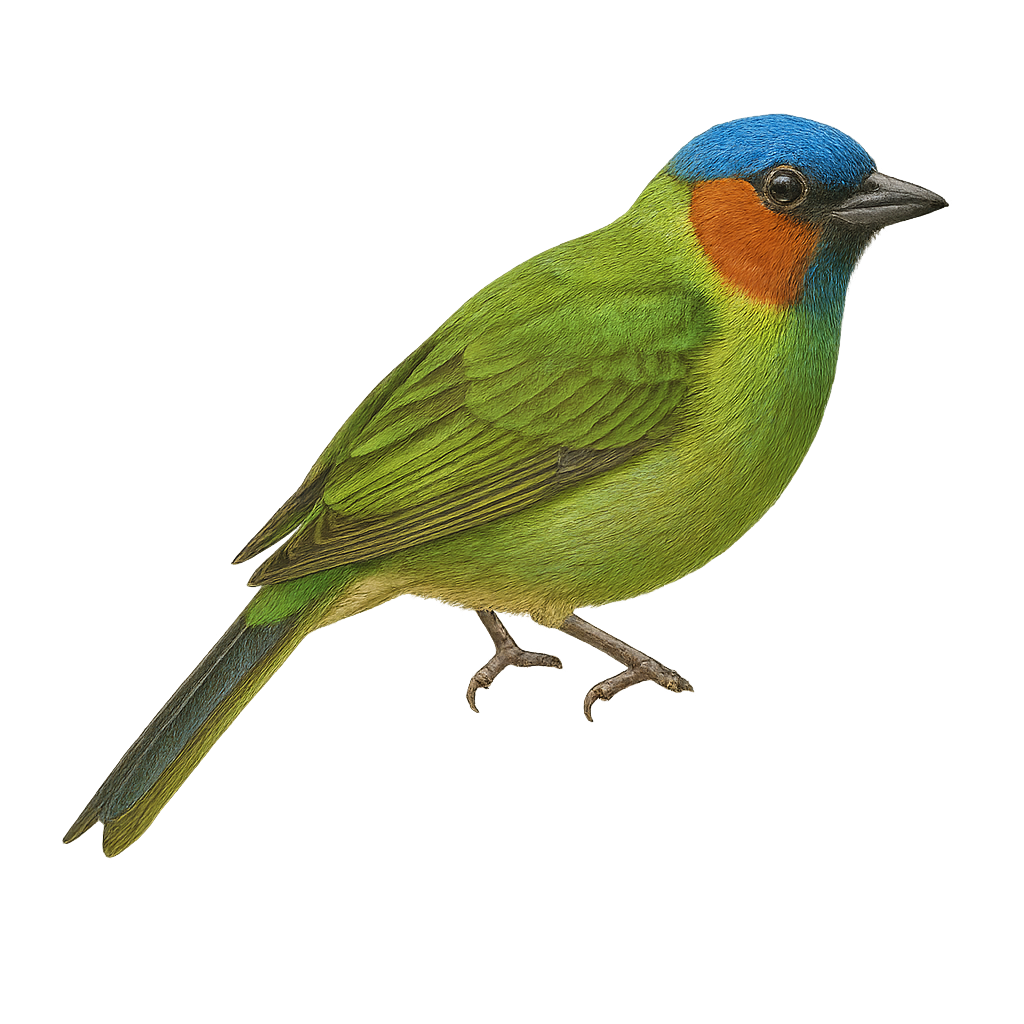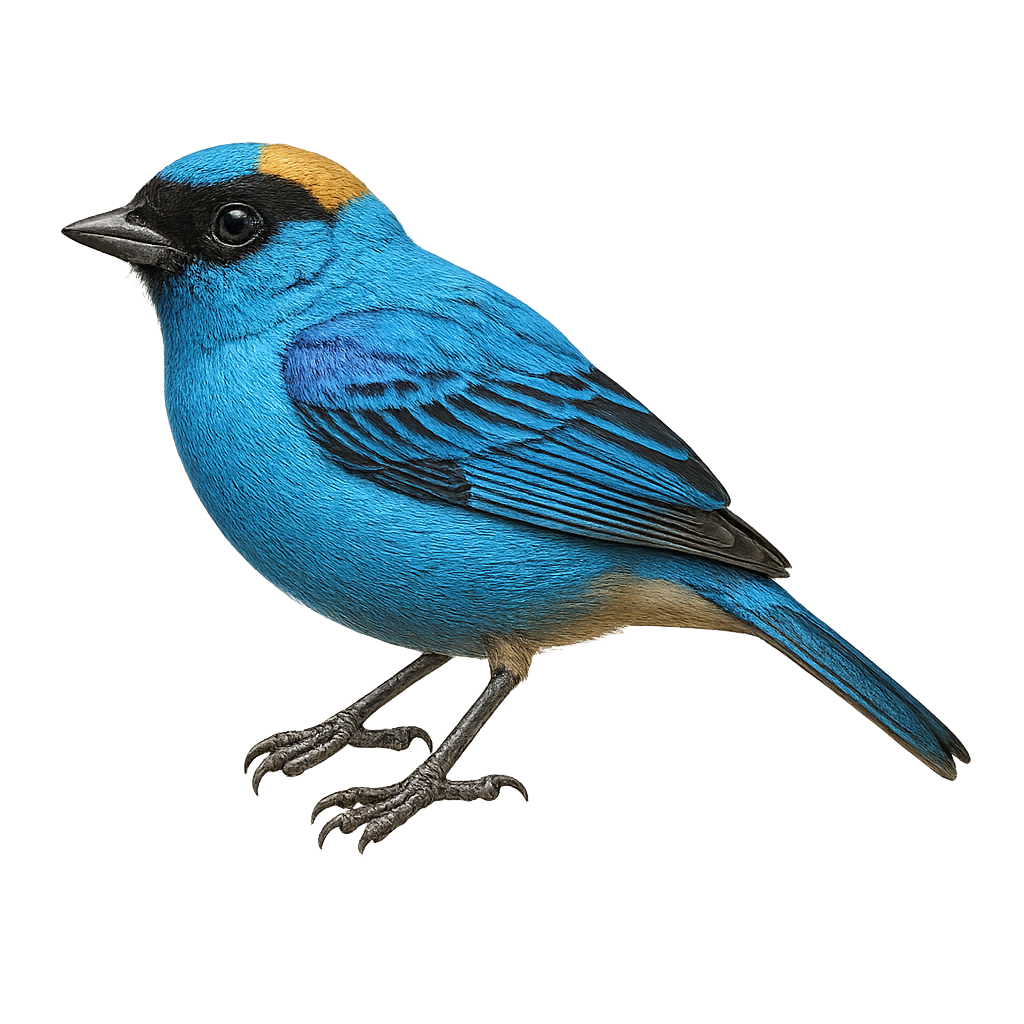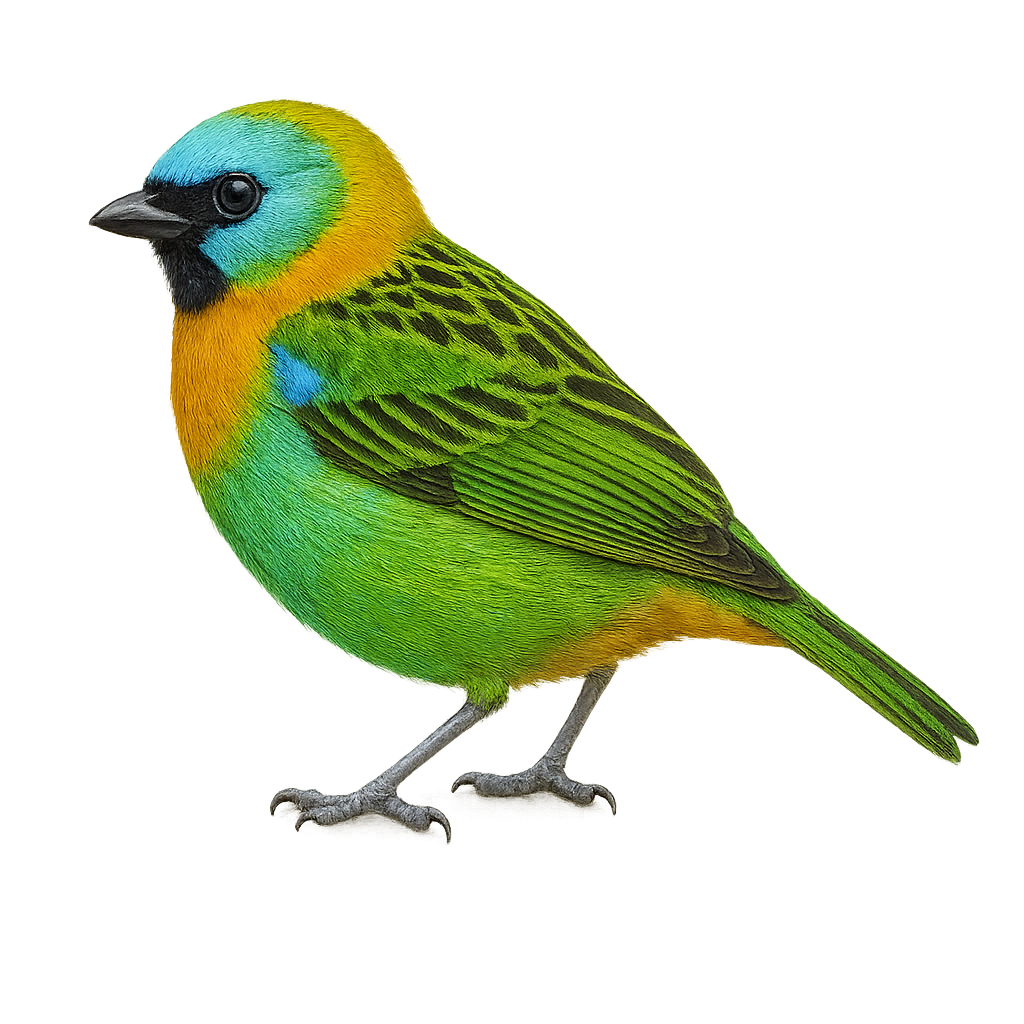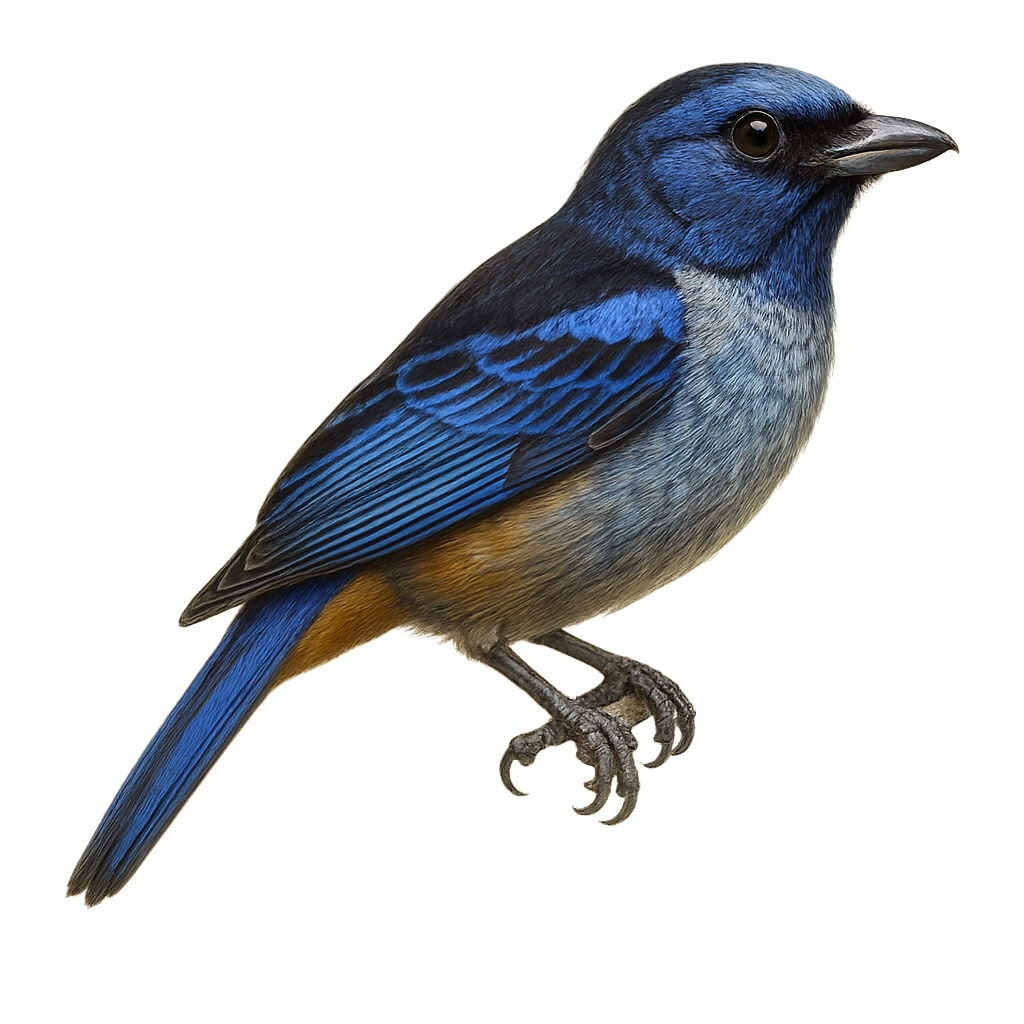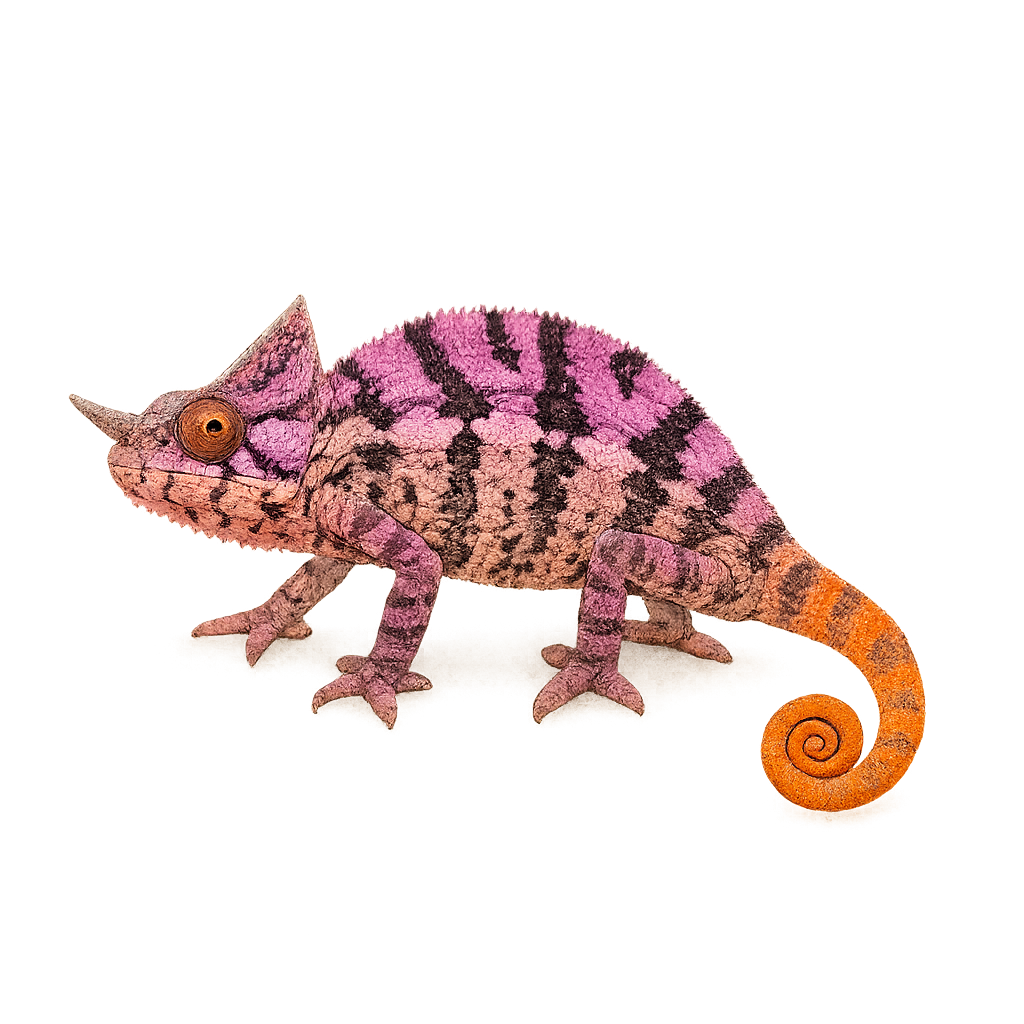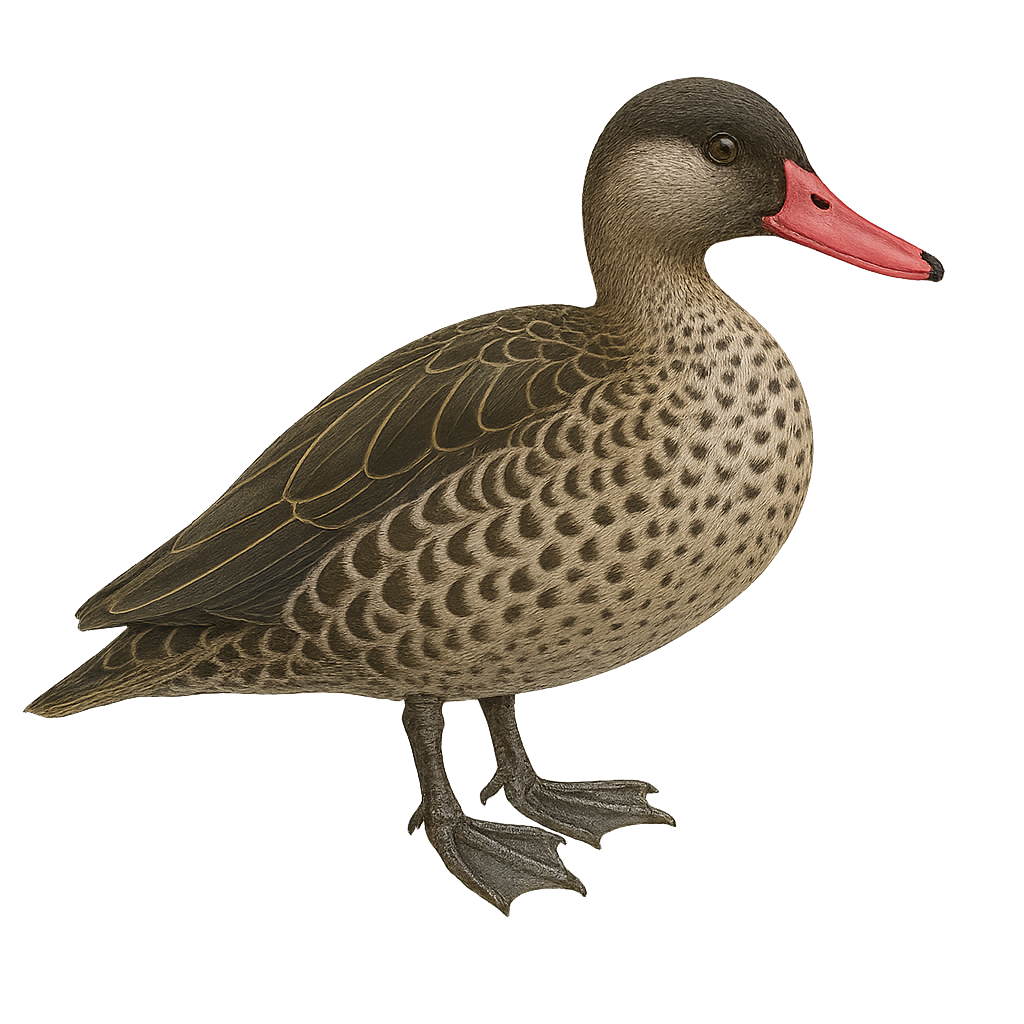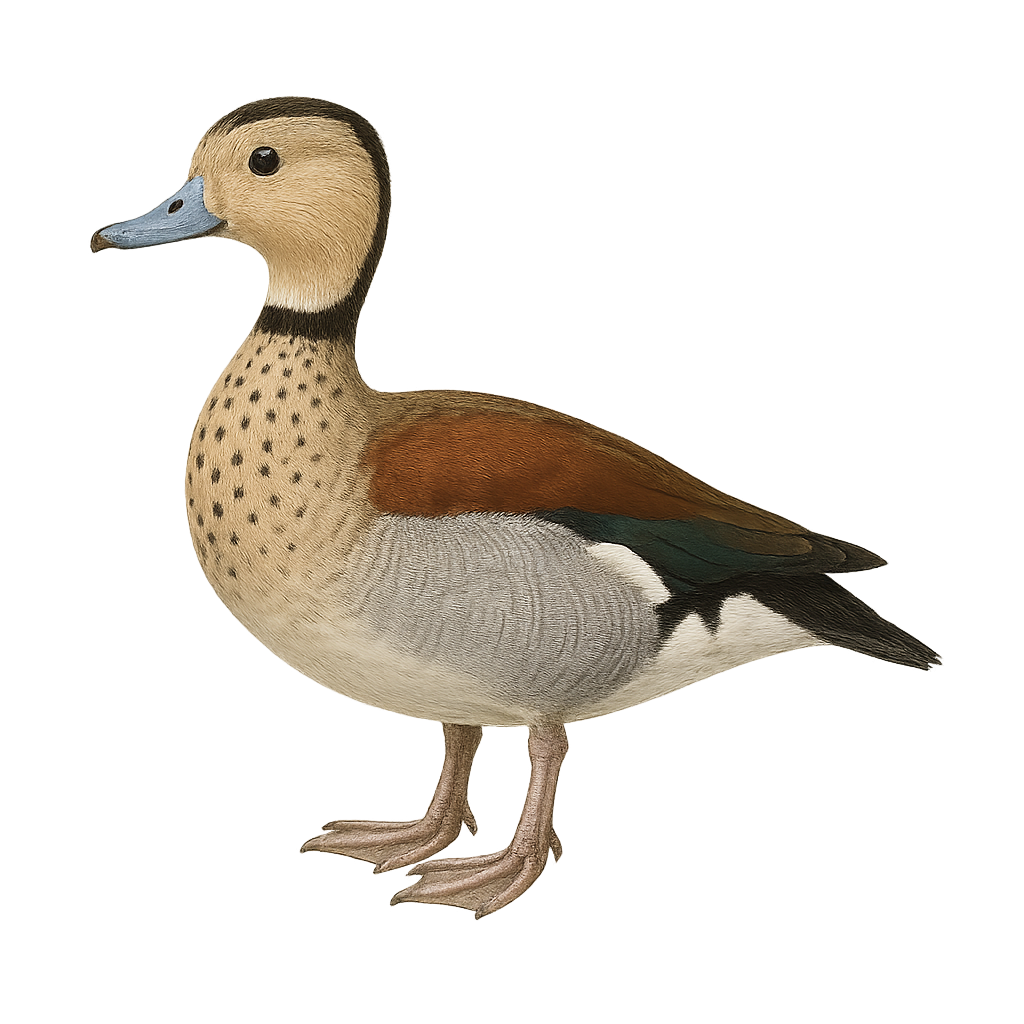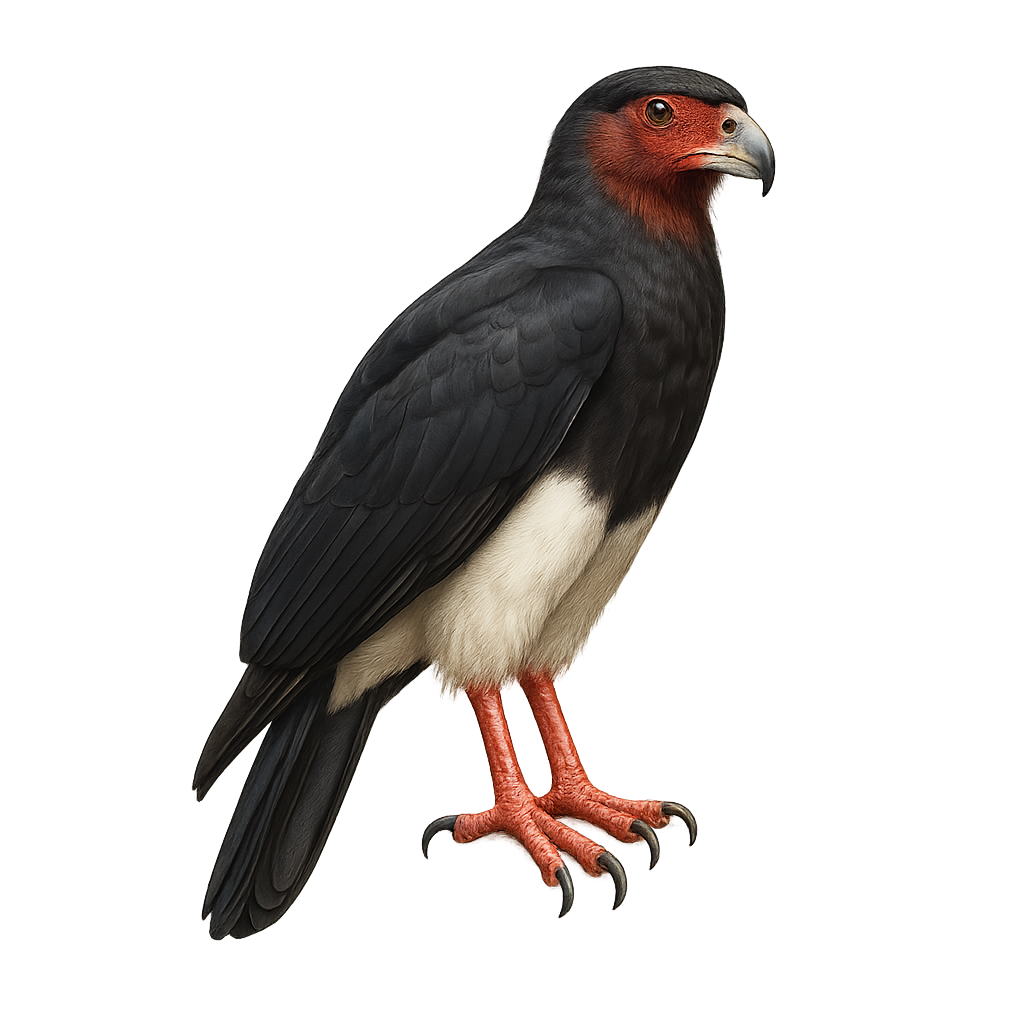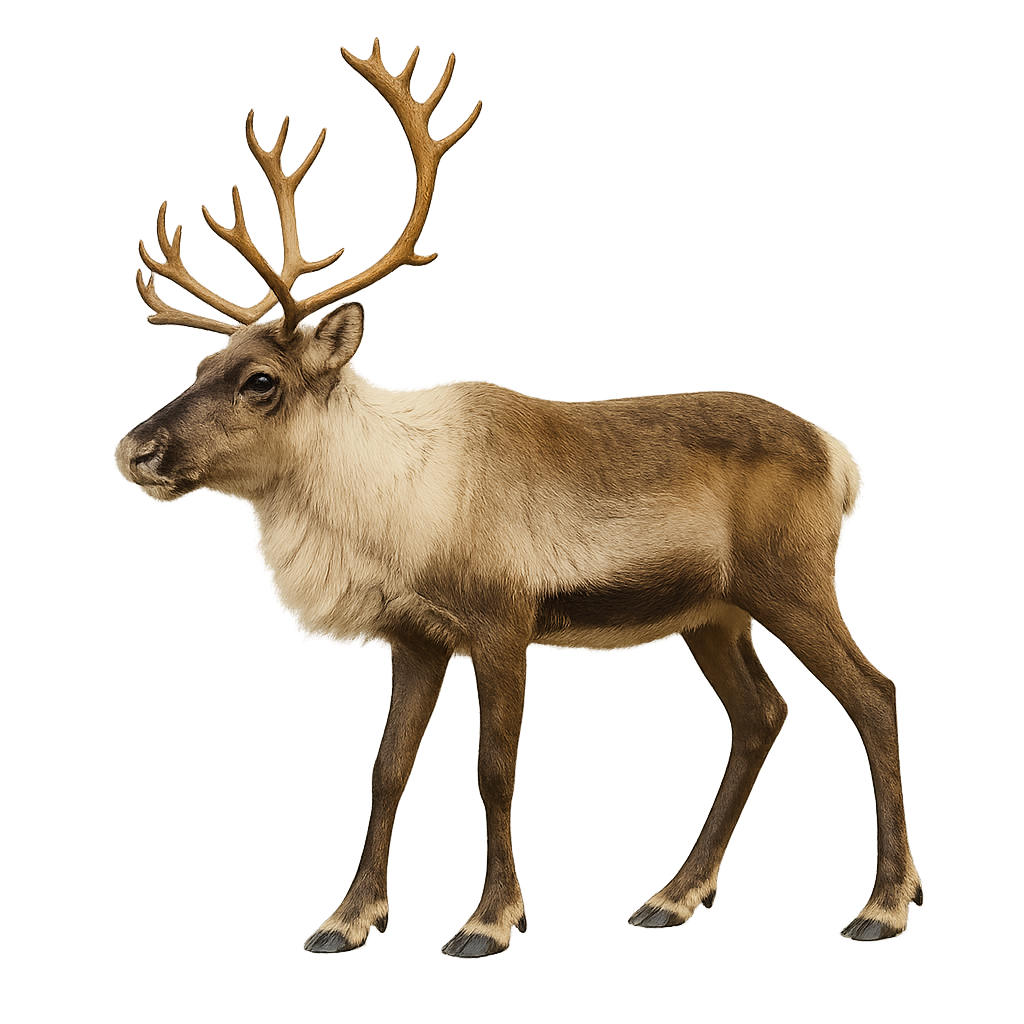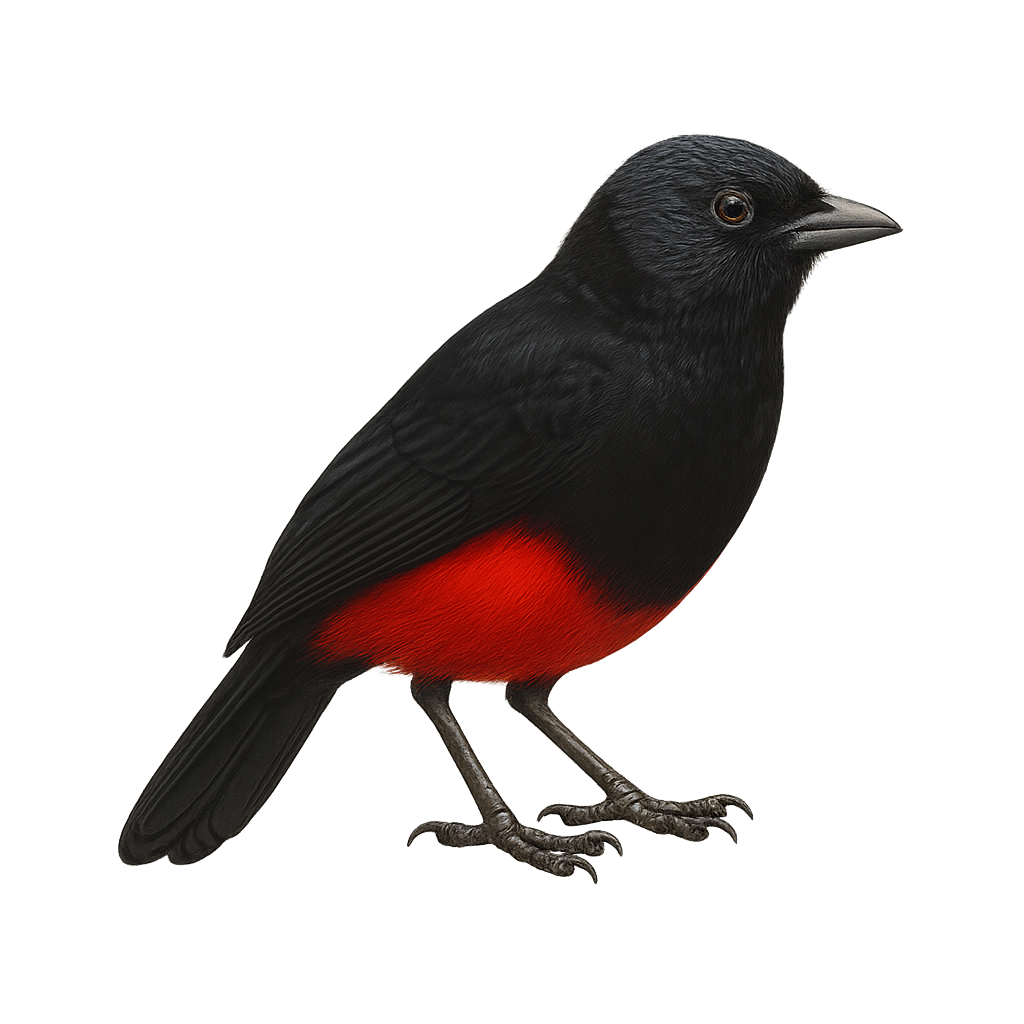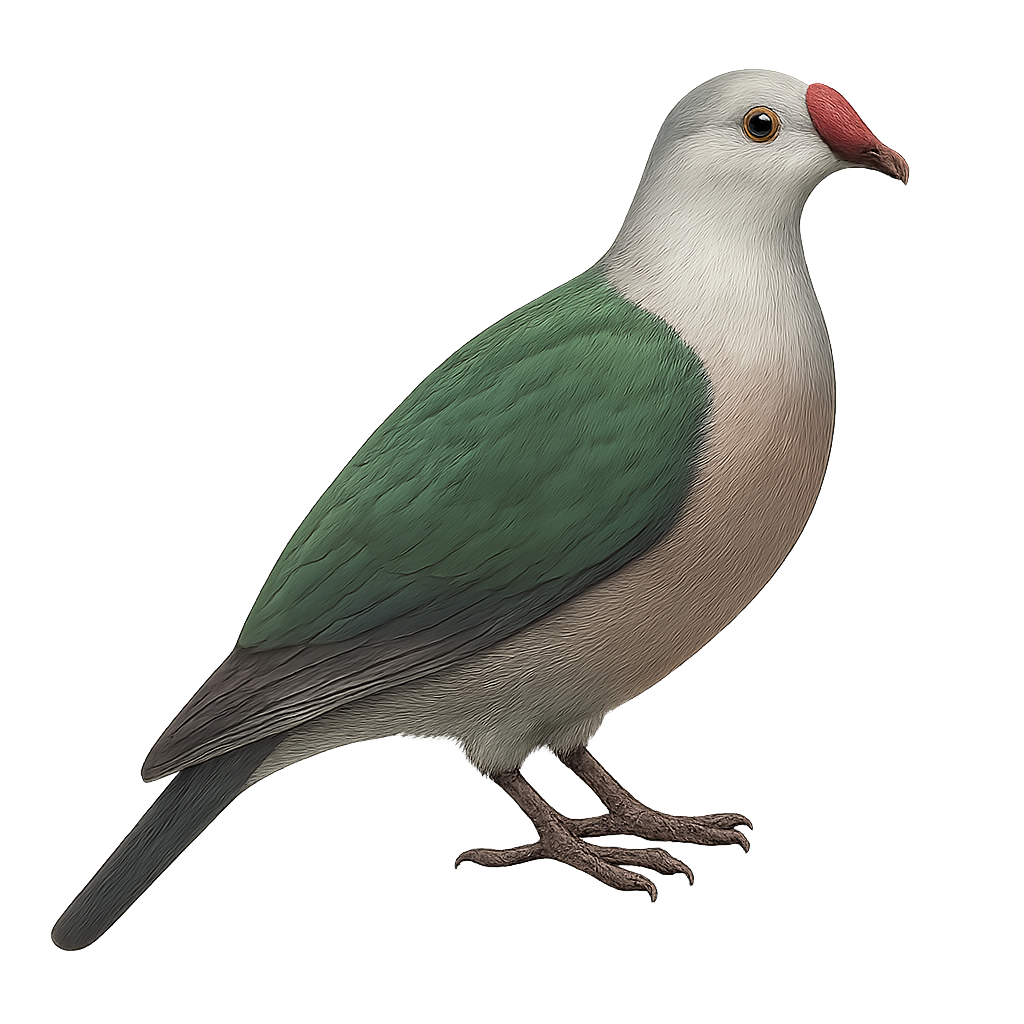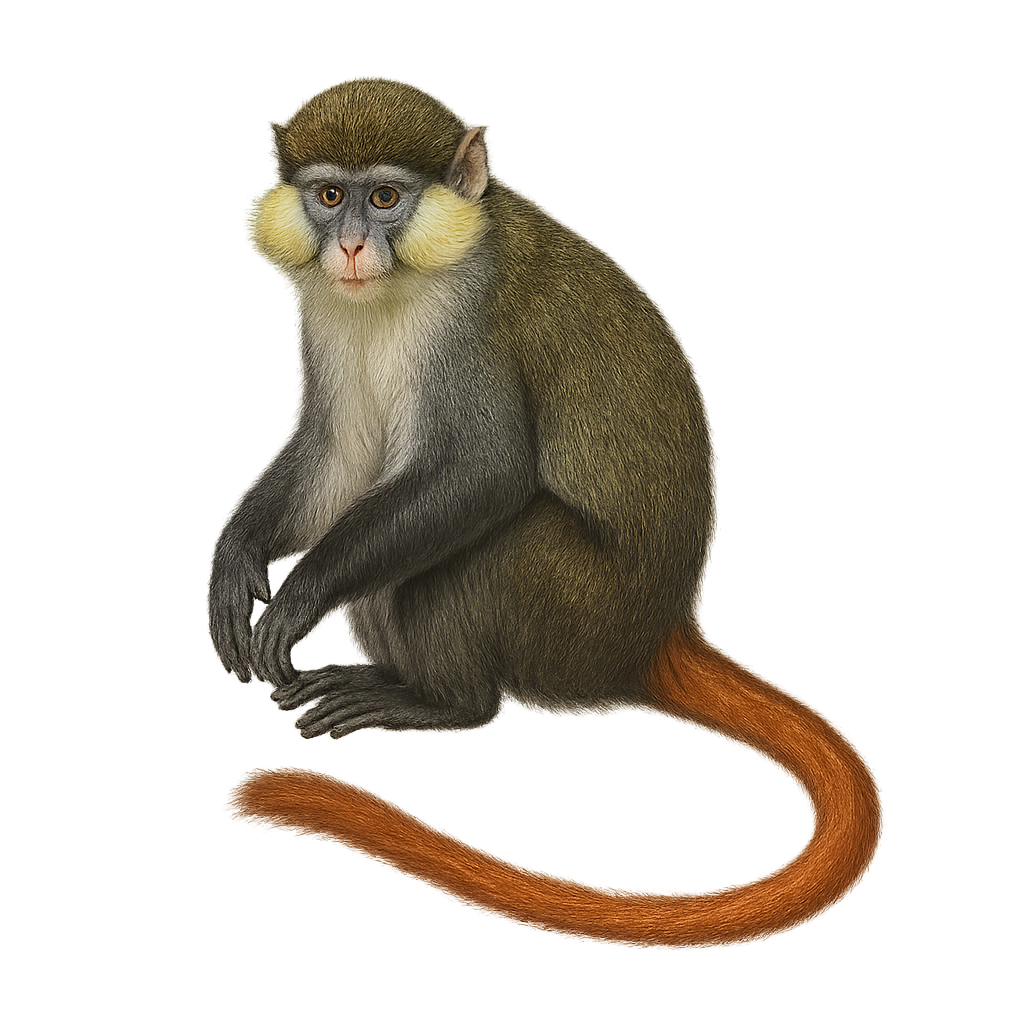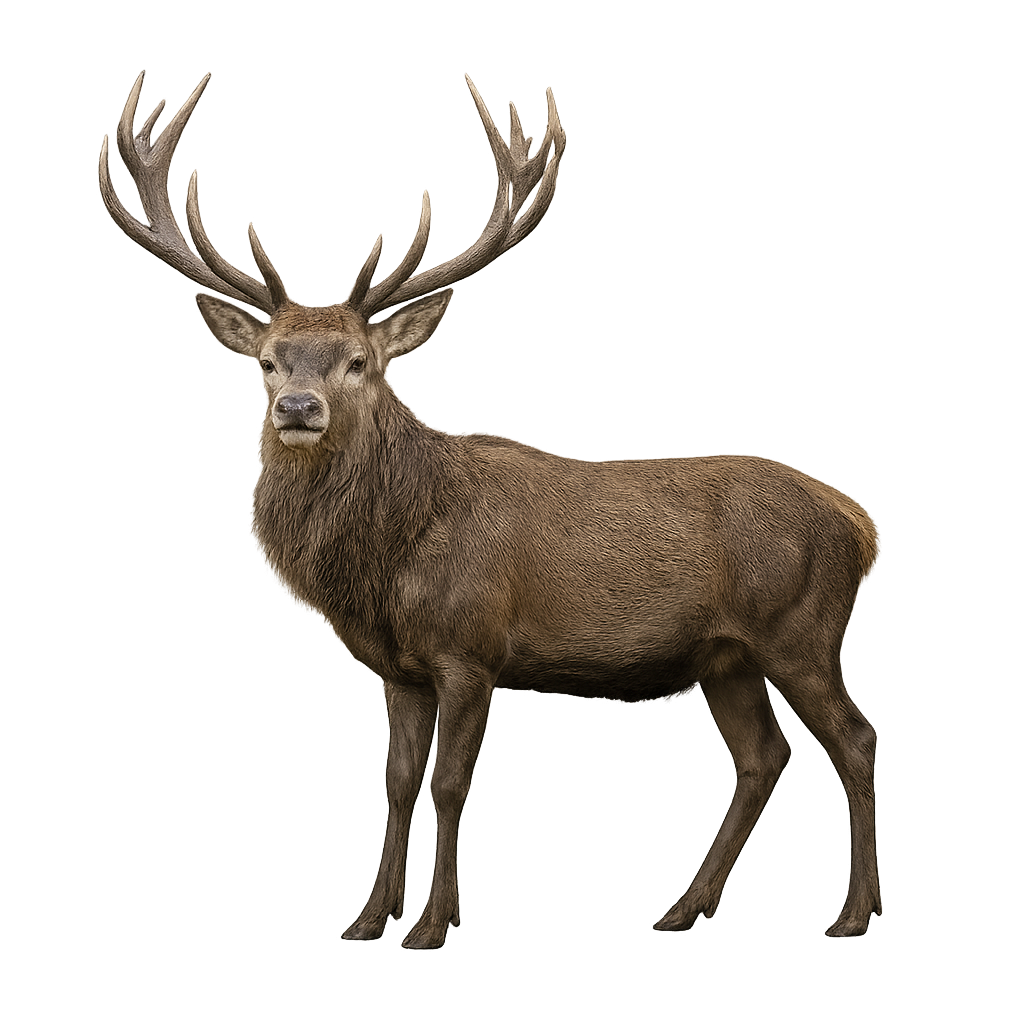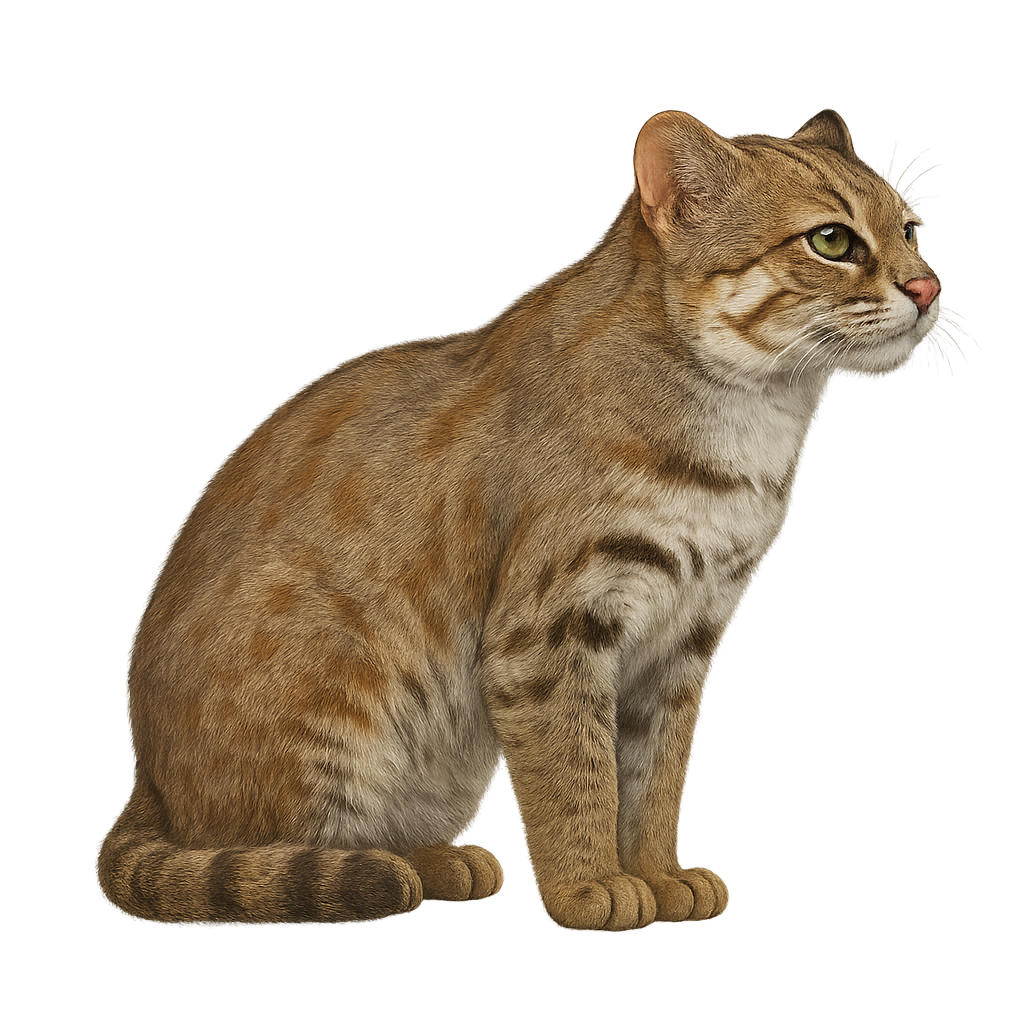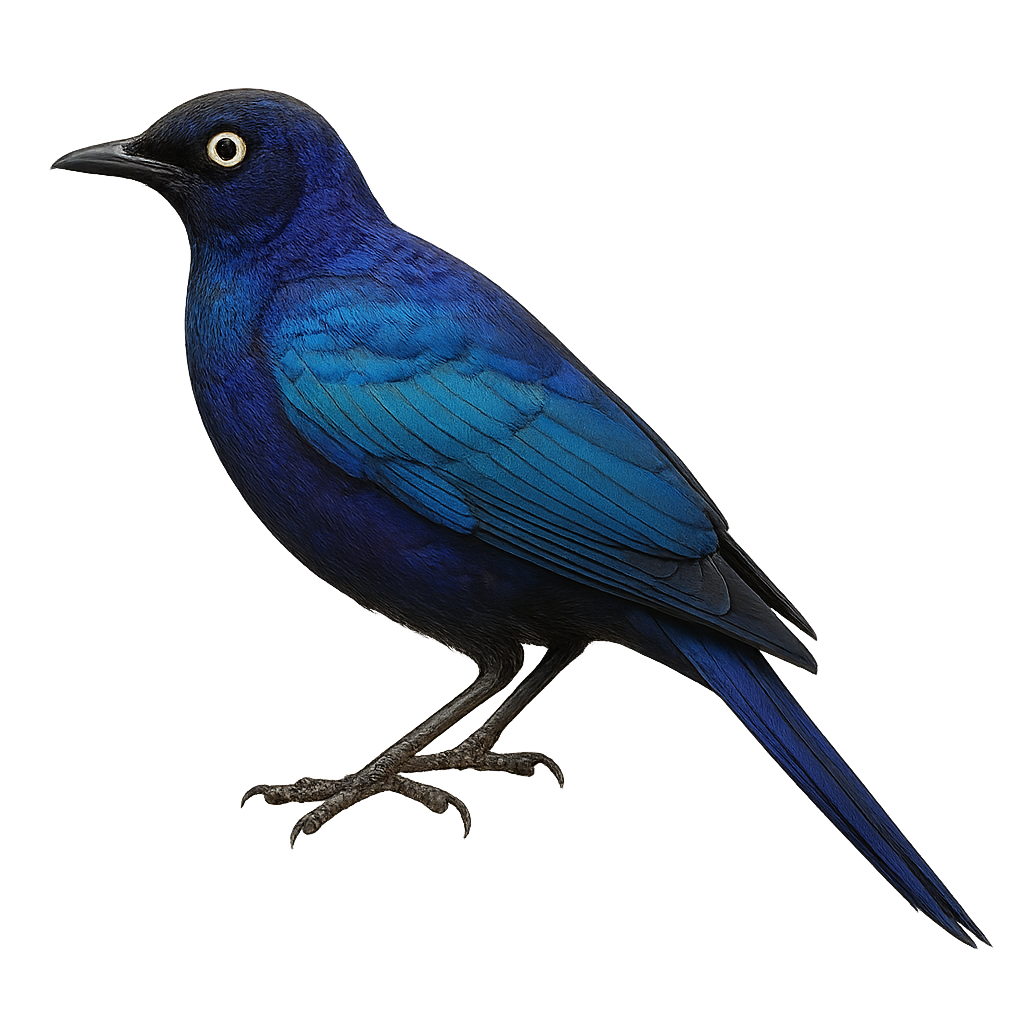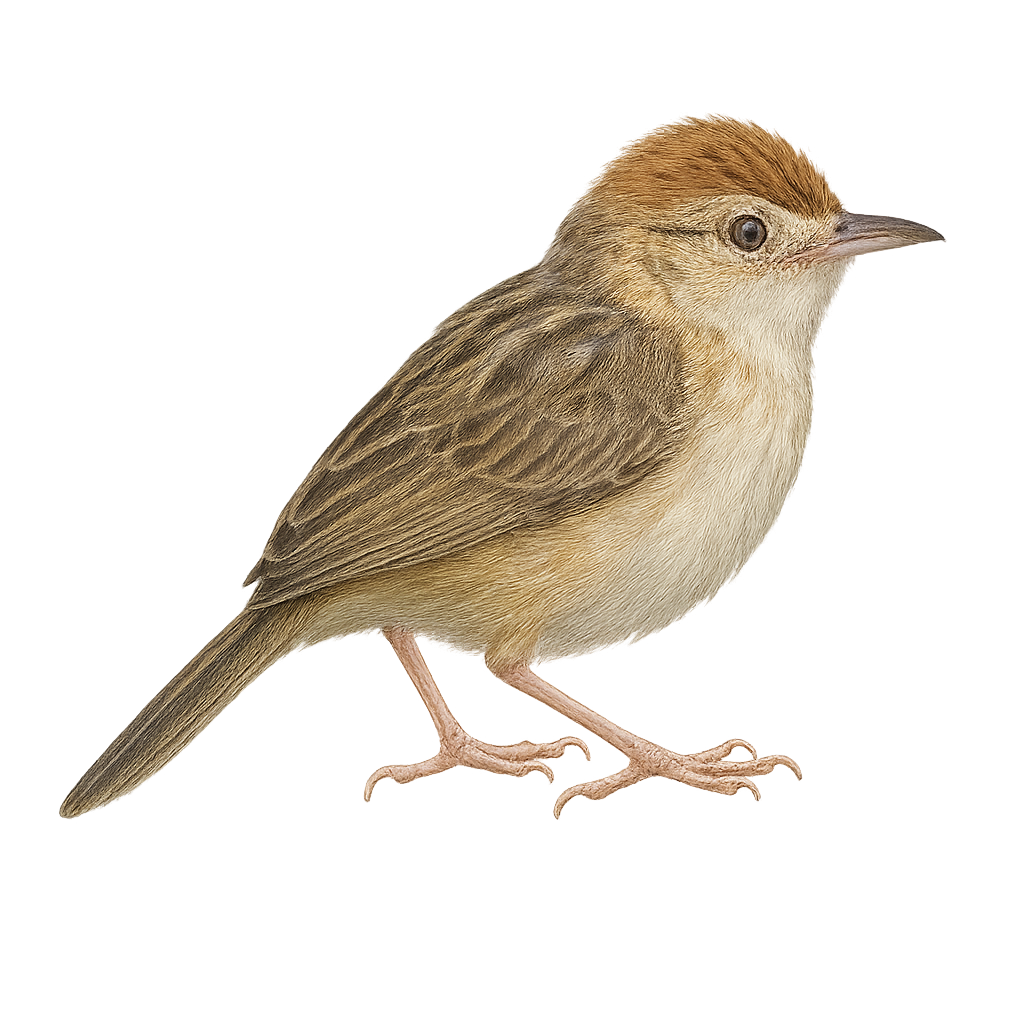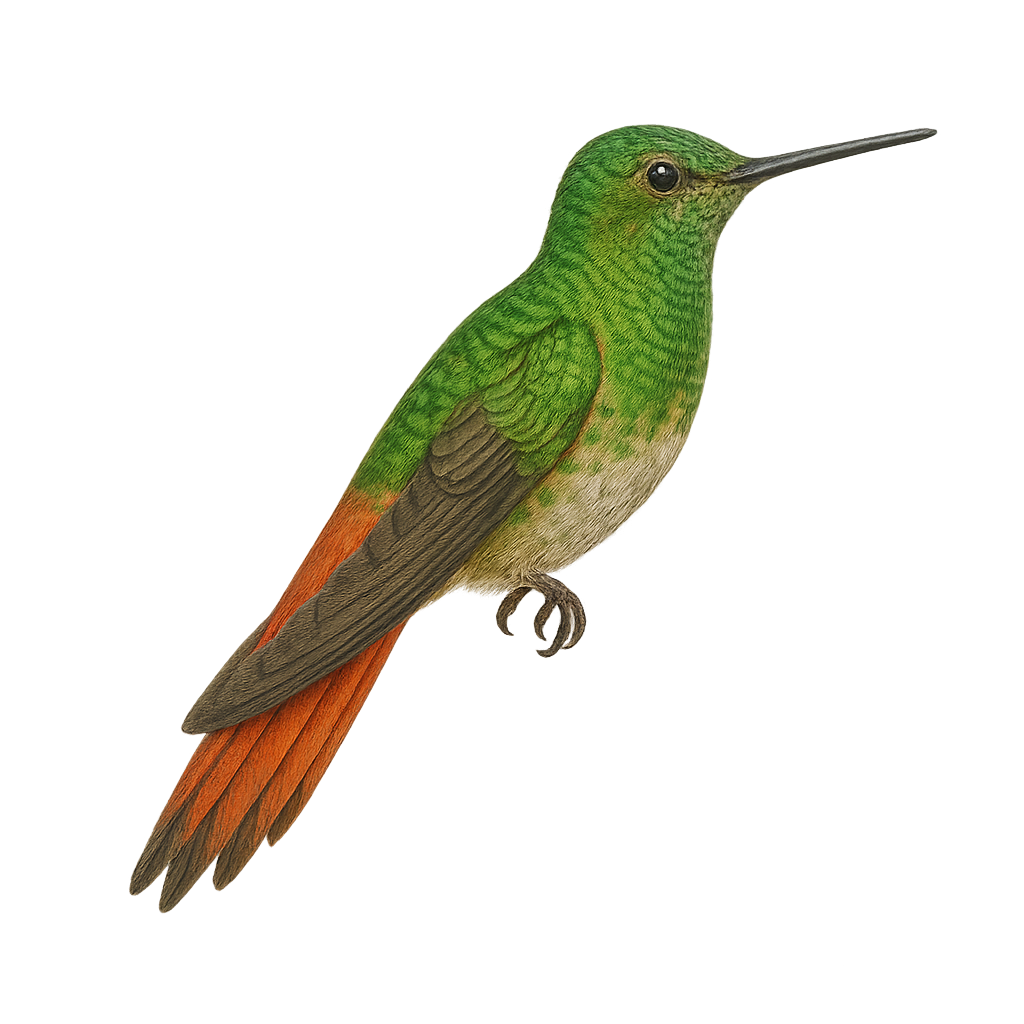The Rufous Hornbill, or Buceros hydrocorax, is a large hornbill endemic to the Philippines, easily recognized by its reddish-brown plumage, massive bright red bill, and broad, flattened casque shaped like a blade. It inhabits primary and secondary forests from lowlands to mountain slopes. Its diet consists mainly of fruits, especially figs, along with small animals. Its strong, heavy wingbeats produce a loud sound in flight. Often seen in pairs or family groups, the Rufous Hornbill is classified as vulnerable due to rapid deforestation within its limited range.
The Rufous-necked Hornbill, Aceros nipalensis, is a majestic bird found in the forests of Southeast Asia. It is distinguished by its glossy black plumage, rufous neck, and prominent casque. This casque, atop its beak, is a hollow structure that aids in the resonance of its calls. Males and females exhibit differences in size and coloration, with males generally being larger and more vividly colored. Arboreal in nature, it primarily feeds on fruits but also consumes insects and small vertebrates. Its natural habitat is threatened by deforestation, impacting its populations. Conservation efforts are crucial for its survival.
The Ruaha Hornbill, Tockus ruahae, is a captivating bird native to the semi-arid regions of East Africa, particularly in Tanzania. This hornbill is notable for its large bill and vibrant coloration, featuring shades of black, white, and red. It is often seen in small groups or pairs, exploring savannas and dry forests in search of food. Its diet is varied, including fruits, insects, and occasionally small vertebrates. The Ruaha Hornbill plays a crucial role in its ecosystem, particularly in seed dispersal from the fruits it consumes. Although its conservation status is not currently concerning, deforestation and habitat loss could pose future threats to its populations.
The Rhinoceros Hornbill, or Buceros rhinoceros, is an impressive bird known for its size and distinctive appearance. It is easily recognizable by its prominent horn-shaped casque, which gives it its name. This casque, although large, is hollow and lightweight. The bird's plumage is primarily black, with white feathers on the tail and white markings on the wings. Its eyes are surrounded by brightly colored bare skin, often red or orange. The Rhinoceros Hornbill inhabits the tropical forests of Southeast Asia, particularly in Malaysia, Thailand, and Sumatra. It plays a crucial role in its ecosystem as a seed disperser, aiding in forest regeneration.
The Red-tailed Vanga, or Calicalicus madagascariensis, is an endemic bird of Madagascar, belonging to the Vangidae family. It is characterized by its striking plumage, with a black head and bright red back, contrasting with a white belly. This bird measures about 14 cm in length and primarily feeds on insects and small invertebrates. It mainly inhabits the dry forests and wooded areas of the island. The Red-tailed Vanga is a diurnal bird, active mainly during the day. Although its conservation status is concerning, it is still relatively widespread in its natural habitat. Its breeding season generally extends from September to December, coinciding with the rainy season in Madagascar.
The Rufous-cheeked Tanager is a colorful and fascinating bird native to the tropical forests of South America. It is distinguished by its rufous cheeks, contrasting with its primarily blue and green plumage. Measuring about 14 cm in length, it is often seen in small groups, feeding on fruits and insects. Its natural habitat includes humid forests and wooded areas, where it plays a crucial role in seed dispersal. Although its conservation status is currently of least concern, deforestation poses a potential threat to its habitat. Observing this bird requires patience and discretion, as it is rather suspicious of humans.
The Rufous-naped Tanager is a colorful and fascinating bird native to the humid tropical forests of South America. It is distinguished by its vibrant plumage, with a rufous head and nape contrasting with a blue-green body. This tanager is often seen in small groups, feeding mainly on fruits and insects. Its natural habitat includes mountain forests, where it can be spotted at various altitudes. Although not considered threatened, deforestation poses a potential threat to its habitat. Its melodious song and bright colors make it a favorite subject for birdwatchers and nature photographers.
The Red-headed Tanager is a colorful and fascinating bird native to the tropical forests of South America. It is easily recognizable by its bright red head contrasting with its green and blue body. This bird measures about 14 cm in length and primarily feeds on fruits, insects, and nectar. It lives in small groups and is often observed in the canopy of humid forests. Although its habitat is threatened by deforestation, it remains relatively common in some areas. Its melodious song and lively nature make it a favorite subject for ornithologists and nature photographers.
The Red-necked Tanager, or Tangara fastuosa, is a bird from the Thraupidae family, endemic to Brazil. It is known for its striking plumage, featuring a bright red head, a vibrant green body, and blue wings. This small bird measures about 13 to 14 cm in length and weighs between 18 and 21 grams. It primarily inhabits the humid tropical forests of eastern Brazil, where it feeds on fruits, insects, and nectar. The Red-necked Tanager is often seen in small groups or pairs, actively moving through the canopy. Although its habitat is threatened by deforestation, it is currently classified as "Near Threatened" by the IUCN.
The Red-shouldered Tanager, or Tangara velia, is a vibrant bird found in the tropical forests of South America. It is easily identifiable by its striking plumage: a bright red back contrasting with a black belly and blue wings. This small passerine, measuring about 14 cm in length, is often seen in pairs or small groups. It primarily feeds on fruits, but also insects, which it catches with agility. Its melodious and varied song is a delight for birdwatchers. Although its habitat is threatened by deforestation, the Red-shouldered Tanager remains relatively common within its range.
The Furcifer rhinoceratus, commonly known as the rhinoceros chameleon, is a chameleon species endemic to Madagascar. It is easily recognizable by its prominent nasal horn, which is more pronounced in males. This chameleon displays a green coloration with shades of blue and yellow, allowing it to blend into its forest environment. It primarily inhabits the island's dry and humid forests, where it feeds on insects. The rhinoceros chameleon is a diurnal animal, spending most of the day hunting and basking in the sun. Although it is relatively tolerant of human presence, it is important to respect its natural space to avoid disturbing it.
The Red-billed Teal, Anas erythrorhyncha, is a medium-sized waterfowl known for its distinctive bright red bill. Its plumage is mostly brown with lighter patterns on the belly and grayish reflections on the wings. It inhabits the wetlands of sub-Saharan Africa, favoring lakes, marshes, and rivers. This duck is often seen in small groups but can form large gatherings outside the breeding season. It primarily feeds on aquatic plants, seeds, and insects. Although generally discreet, it can be approached closely in some areas where it is accustomed to human presence.
The Ringed Teal, Callonetta leucophrys, is a small, elegant duck native to South America, primarily found in the wetlands of Paraguay, Brazil, and Argentina. It is distinguished by its colorful plumage: males have a reddish-brown head with a distinctive white band around the neck, while females display a more subdued brown-gray plumage with delicate patterns. These ducks prefer wetlands, marshes, and lakes with dense vegetation, where they primarily feed on seeds, aquatic plants, and insects. Although generally discreet, they can be observed in small groups, often in pairs. Their behavior is rather suspicious, but they can become accustomed to human presence in protected areas.
The Red-throated Caracara, Ibycter americanus, is a fascinating bird of prey belonging to the Falconidae family. It is distinguished by its bright red throat and black and white plumage. This bird is primarily found in the tropical forests of Central and South America, where it plays an important ecological role as a predator of insects and small vertebrates. The Red-throated Caracara is known for its social behavior, often observed in noisy family groups. It is also recognized for its ability to dislodge wasp nests, feeding on the larvae. Although its conservation status is currently "least concern," deforestation poses a potential threat to its natural habitat.
The Rose-breasted Grosbeak is a medium-sized songbird, easily identifiable by its vivid rose-colored breast contrasting with its black and white plumage. Males display brighter plumage than females, who are mostly brown with hints of yellow. This bird inhabits deciduous forests and woodland edges in North America, migrating to Central America for the winter. Its melodious song is often compared to that of a robin. It primarily feeds on seeds, fruits, and insects. The Rose-breasted Grosbeak is a sociable bird, often seen in small groups. Its breeding season extends from spring to summer, with nests built in trees or shrubs.
The Caribou, or Reindeer in Europe, is a large cervid adapted to cold and northern environments. It is easily recognizable by its distinctive antlers, which are present in both males and females, a unique trait among cervids. Its thick, woolly coat, typically brown with lighter shades on the belly and neck, allows it to survive in the harshest climates. Caribou populations are found primarily in arctic and subarctic regions, including Iceland, where they were introduced and have thrived in the mountainous and tundra landscapes.
The Caribou is a migratory species, undertaking long seasonal migrations to find food resources. It primarily feeds on lichens, grasses, and tundra plants, which it digs out from under the snow during the winter. The Caribou plays a crucial role in its ecosystem by affecting vegetation and serving as prey for large carnivores such as wolves. However, it is threatened by climate change and habitat loss.
The Red-bellied Grackle, or Hypopyrrhus pyrohypogaster, is an endemic bird of Colombia, primarily found in the humid forests of the Andes. This medium-sized passerine is notable for its glossy black plumage contrasted by a bright red belly. It typically lives in small groups and feeds mainly on fruits, insects, and small invertebrates. Deforestation and habitat fragmentation are the main threats to this species, classifying it as vulnerable according to the IUCN. Conservation efforts focus on habitat protection and raising awareness among local communities about the importance of preserving this unique species.
The Ducula rubricera, or Red-knobbed Imperial Pigeon, is a medium-sized bird belonging to the Columbidae family. It is primarily found in the tropical rainforests of New Guinea and surrounding islands. This pigeon is notable for its bright red head, contrasting with its grey and white plumage. It mainly feeds on fruits, playing a crucial role in seed dispersal. Although its habitat is relatively stable, deforestation poses a potential threat. Its behavior is generally suspicious, but it can become accustomed to human presence in protected areas. Its breeding period varies depending on the availability of food resources.
The Red-tailed monkey is an arboreal primate found mainly in the tropical forests of Central and East Africa. Recognizable by its distinctive red tail, it has a grey-green coat with white markings around the nose and eyes. This diurnal monkey lives in social groups of up to 30 individuals and primarily feeds on fruits, but also consumes leaves, flowers, and insects. Vocalizations are crucial for communication within the group, especially to alert others of predators. Although relatively common, deforestation and hunting pose threats to some local populations.
The rusty-spotted cat, Prionailurus rubiginosus, is one of the smallest wild cats in the world, measuring about 35 to 48 cm in length, with a tail of 15 to 30 cm. Its coat is gray-brown with distinctive rusty spots, hence its name. This feline primarily inhabits dry forests and grasslands in India and Sri Lanka. It is nocturnal and solitary, feeding on small mammals, birds, and insects. Although discreet, it is an agile and fast hunter. Its ability to climb trees and sneak through dense bushes allows it to escape predators. Deforestation and habitat loss are the main threats to its survival.
The Redshank is a medium-sized wader with distinctive plumage that changes with the seasons. During the breeding season, the male displays vibrant colors, with a black head and reddish chest, while the female has more subdued tones. Outside the breeding season, both sexes adopt a more muted plumage, often gray-brown with shades of white and black. The Redshank is primarily found in wetlands, estuaries, and lakeshores, where it feeds on small invertebrates, aquatic insects, and occasionally worms and crustaceans.
This migratory bird is known for its long-distance migration, between its breeding grounds in northern Eurasia and its wintering areas in southern Asia and North Africa. While its population remains generally stable, the Redshank is vulnerable to threats such as habitat destruction, pollution, and hunting. The species is protected in some areas where it is found.
The Roe Deer is an elegant, small cervid, recognizable by its slender figure and long legs. It has a coat that changes with the seasons: reddish-brown in summer, becoming more gray-brown in winter. Males carry antlers, which grow back each year and are generally smaller than those of other cervids. The Roe Deer primarily lives in forests, wooded areas, and heathlands, where it hides during the day and becomes more active at dusk and night, particularly for feeding.
Its diet is varied, consisting of leaves, fruits, young shoots, and bark. While it is generally discreet and solitary, it can sometimes be seen in small groups, especially in winter. The Roe Deer is an agile and fast animal, capable of covering large distances in a short time when threatened. While its population remains relatively stable, it faces threats from hunting and habitat loss.
The raccoon dog, or Nyctereutes procyonoides, is a canid native to East Asia, known for its thick fur and distinctive facial mask resembling that of a raccoon. This omnivorous mammal adapts to various environments, from forests to wetlands. Primarily nocturnal and crepuscular, it feeds on small animals, fruits, and vegetation. Although often solitary, it can form monogamous pairs. Introduced to Europe for fur farming, it has established itself in some regions. Its adaptability and varied diet make it a resilient species, though its impact on local ecosystems is sometimes debated.
The Rüppell's Starling is a striking bird known for its iridescent plumage and deep purple shoulders. It primarily inhabits the savannas and wooded areas of East Africa, feeding on fruits, insects, and occasionally small vertebrates. This sociable bird is often seen in groups, which helps protect it from predators. Its song is varied, consisting of whistles and melodious chirps. The breeding season varies by region but is often linked to the availability of food resources. Nests are typically built in tree cavities, where the female lays several eggs.
The Rufous-crowned Cisticola is a small passerine bird belonging to the Cisticolidae family. It is recognizable by its distinctive rufous head and brownish plumage, which allows it to blend into its natural habitat. This bird is primarily found in open grasslands, savannas, and shrublands of sub-Saharan Africa. It is known for its melodious and repetitive song, often heard during the breeding season. The Rufous-crowned Cisticola is an active and agile bird, spending most of its time foraging for food, mainly consisting of insects and small invertebrates. Although relatively common within its range, it can be difficult to spot due to its small size and discreet behavior.
The Rattling Cisticola, a small passerine bird from the Cisticolidae family, is widespread in the savannas and grasslands of sub-Saharan Africa. It is characterized by its brownish plumage with dark streaks on the back and a lighter chest. Its tail is relatively short and often held upright. Known for its distinctive call, a repetitive "rattling" sound, this bird is active and often seen hopping from one grass stem to another. It primarily feeds on insects and small invertebrates. Although generally discreet, it becomes more visible and vocal during the breeding season.
The Ruby-throated Hummingbird is one of the most iconic species of hummingbirds in North America, easily recognizable by the bright red color of its throat, which gives it its name. This small bird has bright metallic green plumage on its back and a white chest. It has a long, slender beak and an extendable tongue that it uses to extract nectar from flowers. In addition to nectar, it also consumes insects and spiders for protein.
The Ruby-throated Hummingbird is a migratory bird, covering long distances between its breeding range in North America and its wintering grounds in Central America. It is known for its rapid and agile flight, capable of hovering in place by beating its wings up to 80 times per second. While its population remains generally stable, it is threatened by habitat loss due to urbanization and climate change, which affect food resources and breeding conditions.
The Rufous hummingbird is a fascinating species of hummingbird, recognized for its small size and brilliant feathers in shades of copper and red. Native to North America, it migrates each year between the United States and Mexico. This hummingbird primarily feeds on nectar, which it collects using its long bill and extendable tongue. It is often seen hovering in place, a feat made possible by its extremely agile wings. The Rufous hummingbird is also known for its territorial behavior, especially when defending its favorite flowers.
The Red-tailed Comet, or Sappho sparganurus, is a fascinating hummingbird known for its spectacular tail and vibrant colors. Native to the Andes, it is distinguished by its iridescent plumage, with shades of green and red. Males boast a long, forked, reddish tail, while females have a shorter, less colorful tail. This hummingbird is often seen in flower gardens and open forests, where it primarily feeds on nectar, playing a crucial role in pollination. Its fast and agile flight allows it to escape predators and vigorously defend its territory. Although its habitat is relatively stable, it remains vulnerable to environmental changes.


